Free printable Spanish worksheets for students learning Spanish as a second language. Our worksheets are designed with the beginner in mind, so you can even use our PDF Spanish printables with your preschool and kindergarten students. You’ll find beautiful full-color Spanish charts, worksheets, games, activity pages for learning the basics below. Simple categories are includes like Spanish Colors, Days of the Week in Spanish, and Spanish Months of the Year.
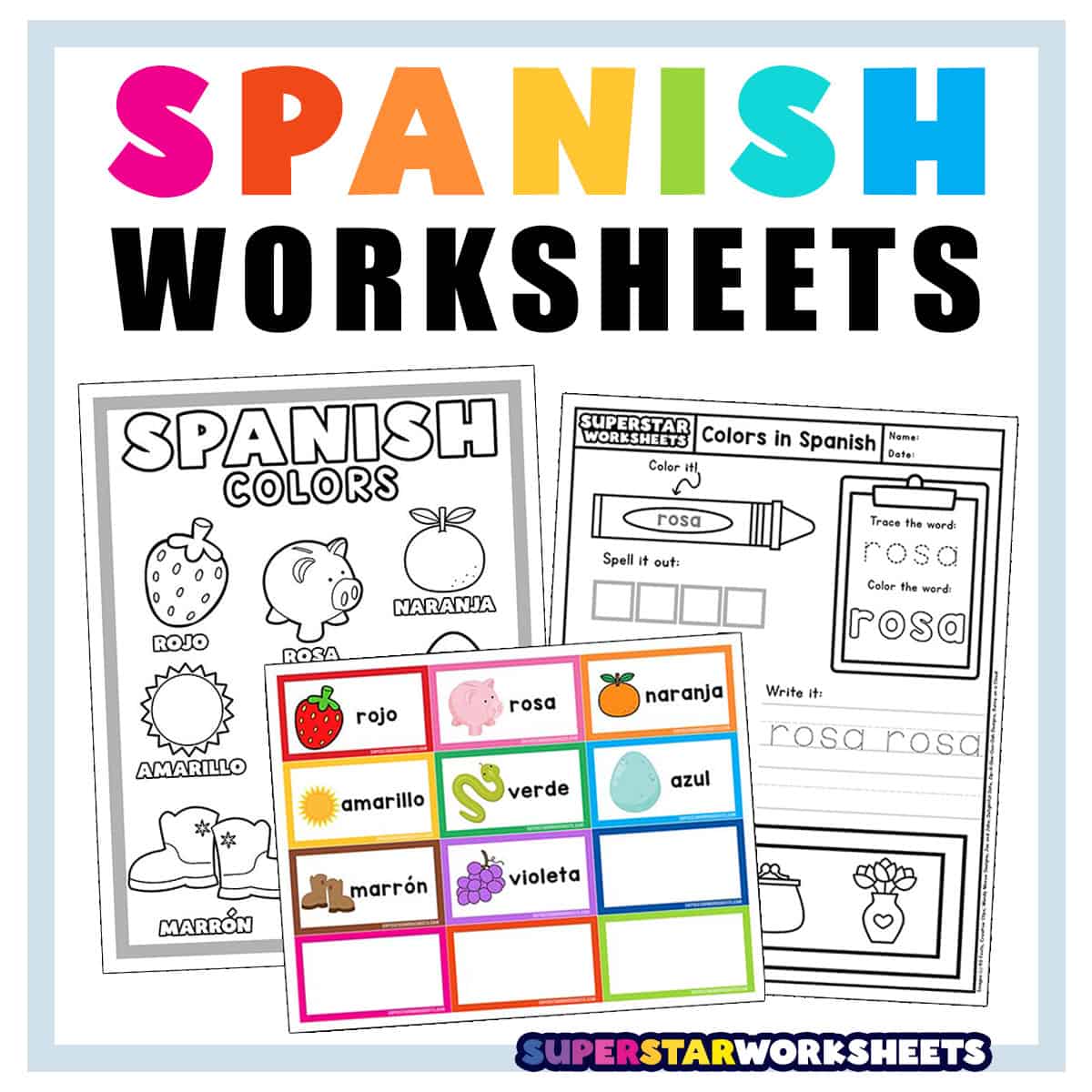
Free Printable Spanish Worksheets
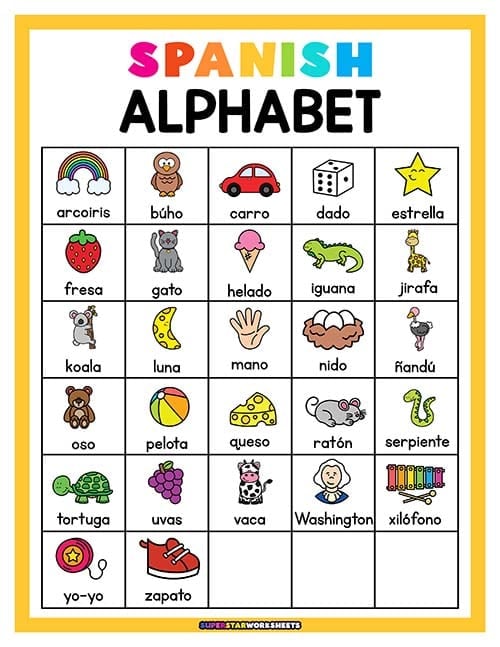
Spanish Alphabet Chart
Spanish Alphabet charts for kids! Students will practice their Spanish alphabet with various colorful pictures to reference. Adorable beginning letter pictures represent each letter of the Spanish alphabet.
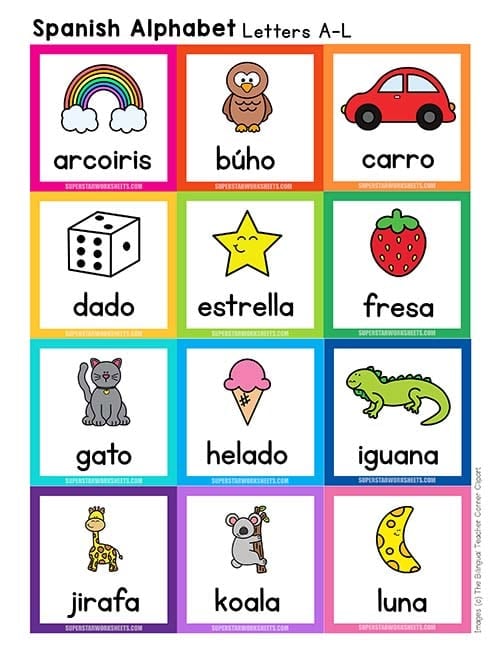
Spanish Alphabet Worksheets
These printable pages feature a variety of games, cards, tracing activities, and more, making learning the Spanish alphabet and words fun and easy! Our PDF worksheets are completely free to download and use with your students.
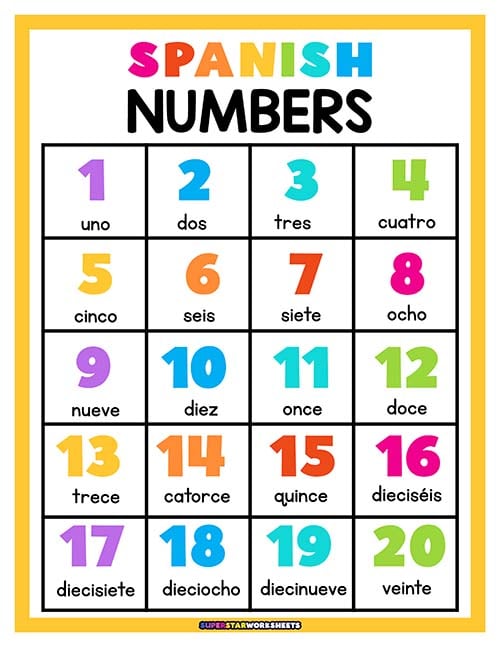
Spanish Numbers
Charts provide a fun and engaging way for your students to learn the numbers 1-20 in Spanish. These Spanish numbers can be used as anchor charts, number lines, or printable reference sheets for your students in preschool, elementary school, and homeschool settings.
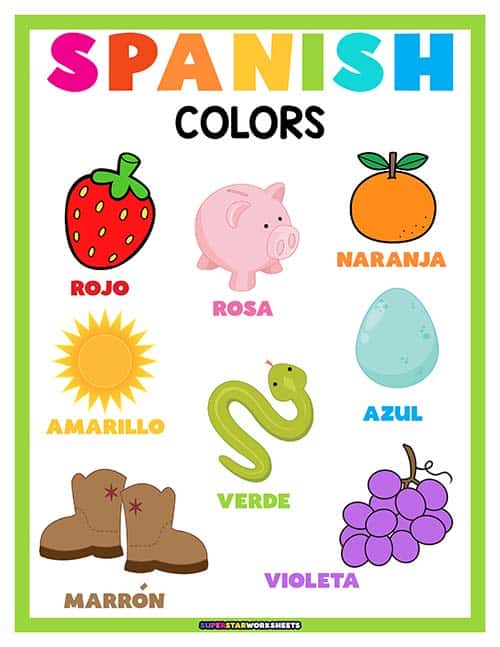
Spanish Colors Worksheets
Free printable classroom charts for students learning to read and write a rainbow of colors in Spanish. We’ve also designed printable Spanish colors worksheets, color-by-number activity pages, Spanish flashcards, and more.
Beginner Spanish Worksheets for Kindergarten
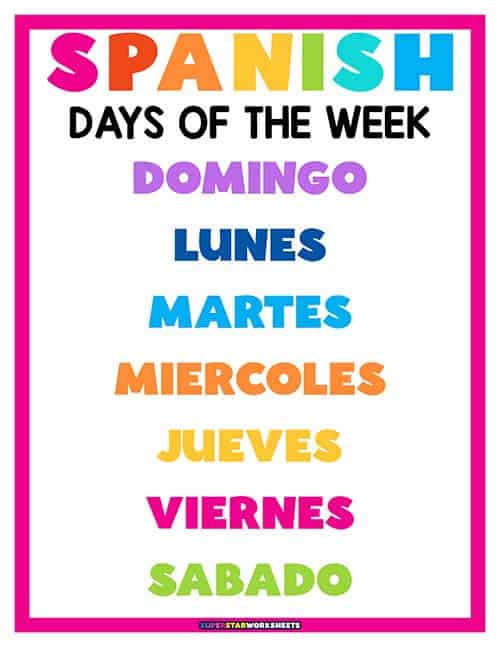
Spanish Days of the Week
Free printable charts, worksheets, and activity pages for students to learn the days of the week in the Spanish language. These colorful resources are great for daily morning circle time review or as reference charts throughout the classroom.
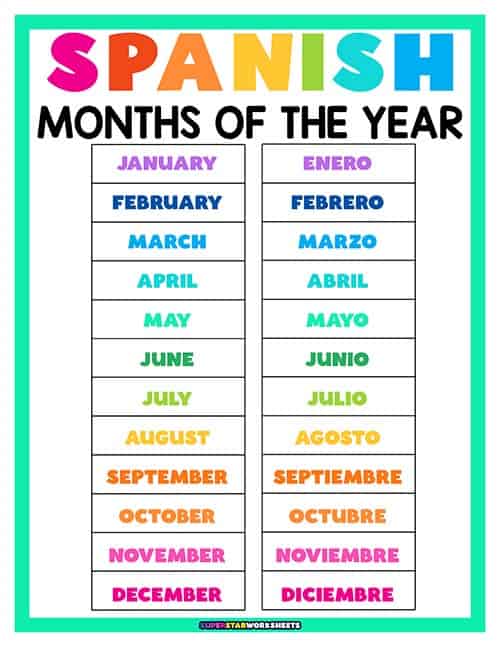
Spanish Months of the Year
Engage young learners with our free printable Spanish Months of the Year worksheets, games, charts, printables, flashcards and more! Learning a new language is fun with our free Spanish Worksheets.

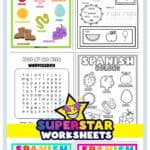
Leave a Reply